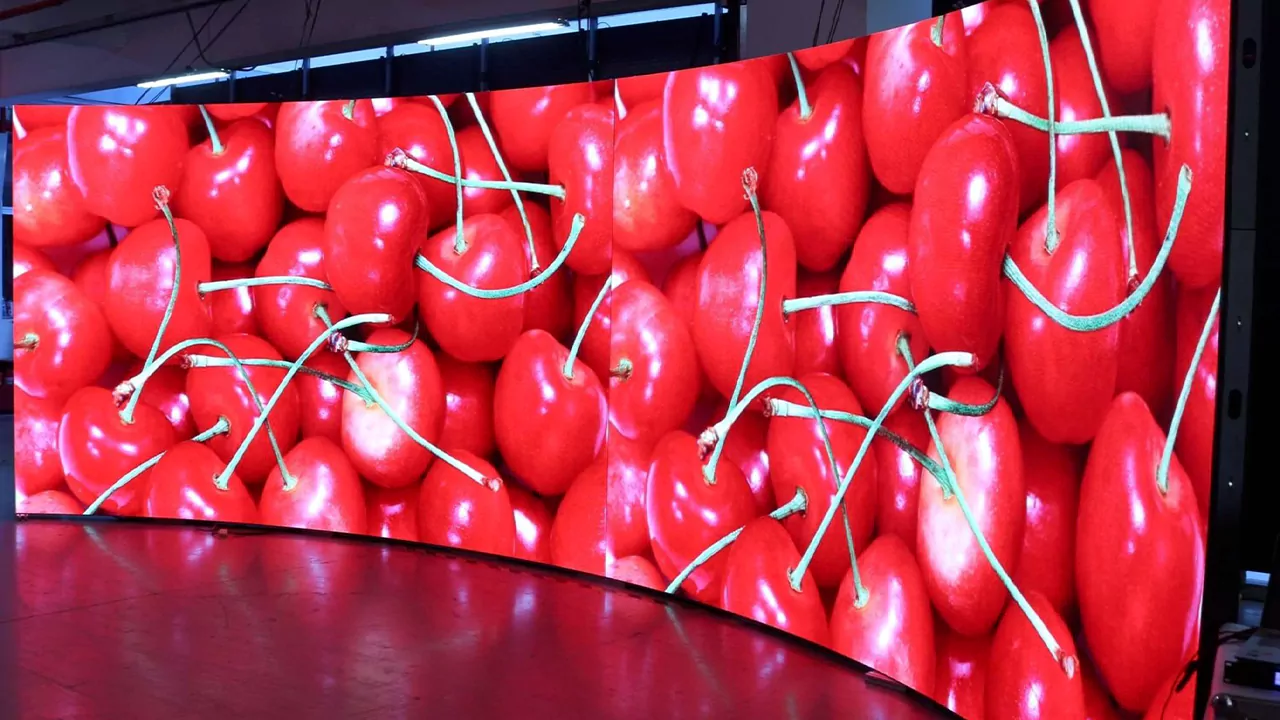In the realm of modern display technology, LED displays have become ubiquitous across a wide array of applications, from indoor advertising screens to massive outdoor billboards. Public spaces like shopping malls, stadiums, transportation hubs, and even building facades frequently feature these large LED displays due to their bright, vivid visuals and energy efficiency.
Understanding the type of backlight used in these LED displays is essential when discussing their performance, durability, and suitability for public use. Unlike consumer displays that rely on LCD panels with LED backlighting, large-scale LED displays operate differently. Instead of using an external backlight, each pixel in these displays consists of a small LED that emits its own light.
This article will delve into how these LEDs function, the technology behind them, and why directly emitting LED displays are the preferred choice for large, public installations.

How Do Large LED Displays Work?
Unlike traditional LCD displays, which require an LED backlight behind the screen to illuminate the pixels, large-format LED displays utilize self-emissive LEDs. This means that each individual pixel is made up of red, green, and blue (RGB) LEDs, which light up independently to form images and text. The display does not require a separate backlight.
Here’s a breakdown of how these direct-view LED displays work:
- Self-illuminating pixels: Each pixel is composed of individual red, green, and blue diodes, which together can produce millions of colors. Since these LEDs directly emit light, they do not need a backlight, making the screen both efficient and highly visible even in bright outdoor environments.
- Modular construction: Large LED screens are often assembled from smaller modules or panels. These panels contain thousands of LED diodes, which collectively form the complete image or video on the display. This modular design allows for flexible screen sizes and shapes, making it ideal for large public installations.
Key Benefits of Self-Emitting LED Displays
- High Brightness: LED screens are renowned for their exceptional brightness, making them visible even in direct sunlight. This is crucial for outdoor displays in public spaces where ambient light can be very strong.
- Energy Efficiency: Unlike LCD screens that require constant backlighting, LED screens only light up the necessary pixels. This results in better energy efficiency, especially when displaying dark content.
- Vivid Colors and High Contrast: By controlling the intensity of each RGB diode, LED screens can produce vibrant colors and deep blacks, delivering superior image quality.
- Durability: Designed for long-term use in harsh environments, LED displays are built to withstand weather conditions such as rain, heat, and dust, making them ideal for outdoor use.
Why Don't Large LED Displays Use Traditional Backlighting?
In consumer electronics, such as TVs and computer monitors, backlit LED displays are common. These displays use a panel of LEDs placed behind or around an LCD layer to provide uniform brightness. However, this approach is not suitable for large-scale LED displays because:
- Size limitations: Backlit LCD technology is not easily scalable for the enormous sizes required in public installations. The LED-backlit LCD screens used in smaller devices struggle with brightness and viewing angles on a larger scale.
- Brightness: Traditional backlit screens would require immense amounts of power to achieve the brightness levels that direct-view LED displays offer. Large-scale LED displays are often used outdoors, where they need to be bright enough to compete with sunlight and other lighting conditions.
- Modularity: Large LED displays are composed of modular panels of LEDs, which can be easily assembled into various sizes and shapes, a flexibility that backlit systems cannot offer.

Types of LED Technology in Large-Format Displays
While large LED displays donâ
€
™t use traditional backlighting methods, they do rely on different types of LED technology that affect brightness, energy efficiency, and overall performance. Here are some of the most commonly used types in public LED displays:
SMD (Surface-Mounted Diode) LEDs
SMD LEDs are among the most widely used in modern LED displays, especially for indoor and medium-sized outdoor displays. In an SMD display, the red, green, and blue diodes are housed together in a single small package. This compact arrangement allows for higher pixel density, which improves image resolution, especially when viewed from close distances.
Advantages of SMD LEDs:
- High Resolution: Because of their compact design, SMD LEDs allow for smaller pixel pitches, meaning higher resolution images.
- Wide Viewing Angles: SMD LEDs provide better color consistency and clarity from wider angles, making them suitable for indoor displays where viewers may be close to the screen.
Disadvantages:
- Lower Brightness for Outdoor Use: While SMD LEDs are excellent for indoor and semi-outdoor environments, they may not be as bright as DIP LEDs, which are better suited for very bright outdoor applications.
DIP (Dual In-Line Package) LEDs
DIP LEDs are more traditional but are still widely used in outdoor LED displays. In a DIP configuration, the red, green, and blue diodes are separated into individual components, which are mounted directly on the circuit board. This design offers incredible brightness, making it ideal for large outdoor installations.
Advantages of DIP LEDs:
- Extreme Brightness: DIP LEDs can achieve very high brightness levels, making them the preferred choice for large outdoor displays that need to be visible under direct sunlight.
- Durability: DIP LEDs are known for their robustness and can endure extreme weather conditions, making them suitable for permanent outdoor installations.
Disadvantages:
- Lower Resolution: DIP LEDs typically have a larger pixel pitch, meaning they cannot offer the same level of resolution as SMD LEDs. As a result, they are best used in applications where the audience is far from the display, such as highway billboards or stadium screens.
COB (Chip-On-Board) LEDs
COB technology is relatively new and is slowly gaining popularity in high-resolution displays. In this design, multiple LED chips are mounted directly on a substrate, creating a single, larger light-emitting surface. This allows for even higher pixel densities and improved image quality, particularly in indoor and close-range applications.
Advantages of COB LEDs:
- Superior Resolution: COB LEDs allow for ultra-fine pixel pitches, making them ideal for high-definition indoor displays.
- Enhanced Durability: COB LEDs are highly resistant to external damage, as the chips are covered with an epoxy resin, making them ideal for rugged environments.
Disadvantages:
- Cost: COB technology is more expensive than traditional SMD or DIP LEDs, making it less accessible for widespread adoption.
How to Choose the Right LED Display for Public Spaces
Selecting an LED display for public spaces, especially in outdoor environments, requires careful consideration of several critical factors:
Brightness Requirements
Outdoor LED displays must be bright enough to remain visible in daylight. Look for displays that offer high nits (a unit of brightness measurement). DIP LEDs generally provide the best brightness for outdoor settings, while SMD LEDs are suitable for indoor or shaded areas.
Pixel Pitch and Viewing Distance
Pixel pitch refers to the distance between individual LEDs. A smaller pixel pitch means higher resolution, which is crucial if the display will be viewed from close distances, such as in a shopping mall. For outdoor billboards where viewers are farther away, a larger pixel pitch (and lower resolution) will suffice.
Durability and Weather Resistance
For outdoor displays, durability is essential. Ensure the display is waterproof, dustproof, and capable of withstanding extreme temperatures. DIP LEDs are often preferred for their ruggedness in outdoor settings.
Energy Efficiency
Energy efficiency is important for long-term operational costs, particularly for large public installations that run continuously. LED technology is more energy-efficient than older display technologies like LCD or plasma, but newer LED configurations like SMD and COB can offer further savings.
Conclusion: Choosing the Right Type of LED Technology
When it comes to large-scale LED displays used in public spaces, the choice of technology is critical for ensuring long-term performance, visibility, and durability. Unlike backlit displays, these LED screens rely on self-emitting diodes, with SMD, DIP, and COB being the primary types of LED technologies available.
For outdoor use, DIP LEDs offer superior brightness and ruggedness, while SMD LEDs are better suited for indoor or semi-outdoor applications where higher resolution is required. COB LEDs represent the future of high-definition, durable LED displays but come at a higher cost.
Ultimately, the best choice depends on your specific needs, whether it’s a high-resolution indoor display for close-up viewing or a bright, durable outdoor display that can withstand the elements.
